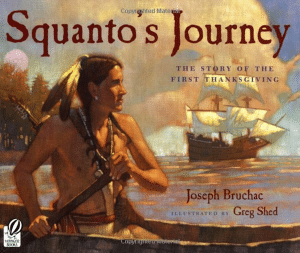The story of the Pilgrims has its origins in the desire of religious independence from the Church of England. A group of devout Protestants from England, and their fellows, who had 11 years before gone to Holland, believed that the Protestant Reformation in England had not yet been completed. They wanted to set themselves apart from the Church of England and the Catholic Church, because they strongly believed that the Church of England, and the Catholic Church, had strayed beyond Christ’s teachings, and established religious rituals, and church hierarchies, that went against the teachings of the Bible. *
How They Got Here
The Dutch contingent bought a small ship, the Speedwell, and sailed it to Southampton to join up with their English friends. The English had chartered the cargo ship, the Mayflower.
Both ships set sail on August 15, 1620, but the Atlantic crossing was aborted twice as the Speedwell proved unseaworthy. The Pilgrims regrouped and 102 of the original 120 passengers – 18 gave up in disgust – set sail for the six-week voyage to the New World.
The Hardships of Their Voyage
According to the Mayflower History website, “The voyage itself across the Atlantic Ocean took 66 days, from their departure on September 6, until Cape Cod was sighted on 9 November 1620.”
In the North Atlantic summer, the first half of the voyage went smooth enough. The crowded conditions with 102 souls packed aboard a smelly cargo ship just 90 feet long (about 10 feet longer than a modern tennis court) must have been trying.
When October arrived, so did the North Atlantic high winds and heavy seas. Pilgrim chronicler and later governor of the Plymouth Colony wrote:
“In many of these storms the winds were so fierce, and the seas so high, as they could not bear a knot of sail, but were forced to heave to [face into the wind to stop the ship], for many days together.”
Remarkably, only one passenger, a young servant named William Butten, died during the voyage.
Where the Pilgrims Landed
Their original goal was the mouth of New York’s Hudson River. After unsuccessful attempts to reach that destination, they landed instead at Massachusetts Bay. It is there that they found an abandoned Patuxet Indian village. Its previous inhabitants had been all but wiped out by a plague, which was most likely smallpox, spread by contact with European sailors.
Plymouth was a good spot. It possessed already cleared land for growing crops, a nice deep-water harbor, and high ground where they could place a cannon for self-defense.
Their First Hard Winter
During that first New England winter, the Pilgrims must have doubted their ability to survive. Starvation and sickness wiped out about half their original 100, along with 18 of the 30 women of childbearing age. During that time, heroic nursing measures by people such as Miles Standish and future governor William Bradford helped pull the survivors through.
Even so, it is doubtful that the first Plymouth settlers would have made it through another winter had it not been for the compassion and generosity of the local Wampanoag Indians.
Help From Native Americans

Squanto (a.k.a. Tisquanatum) met his Pilgrim friends in March of 1621 and served as a translator, ambassador and treaty negotiator for the new settlers. More importantly, he taught the Pilgrims to live off the land. Read more about his remarkable and sometimes shady exploits in the National Review web article, Squanto, the Worldly Indian Who dazzled the Pilgrims.
Plymouth Was Eventually Absorbed
Plymouth eventually became a not-so-prosperous colony and expanded into seven more settlements from its original founding in 1620, until it was absorbed by the Massachusetts Bay colony in 1690.
For those 70 years, the inhabitants were content to scratch out a living fishing and trading as well as growing the crops they needed for self-sufficiency. The Plymouth colonists were nevertheless content to be left alone, and the British mostly ignored them.
- Genealogies of Mayflower Families, 1500s-1800s
- The Complete Mayflower Descendant and Other Sources, 1600s-1800s







